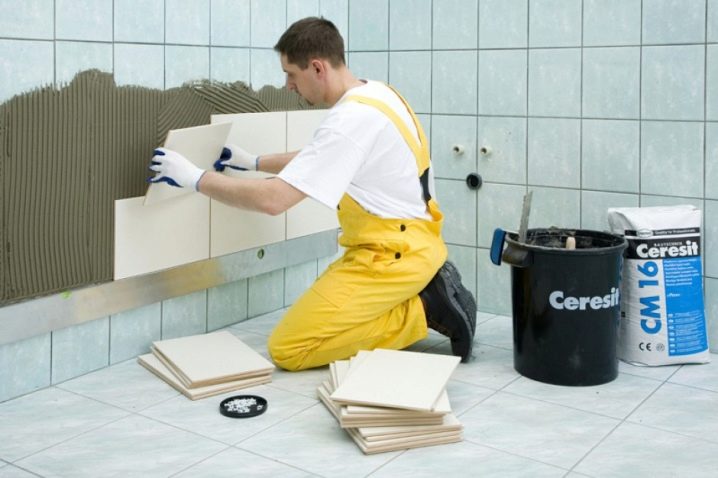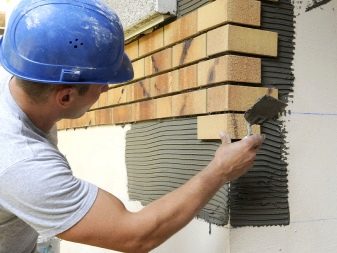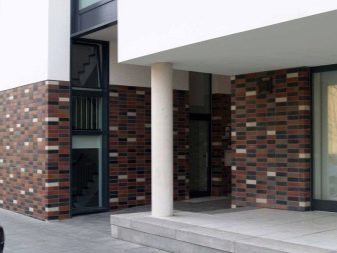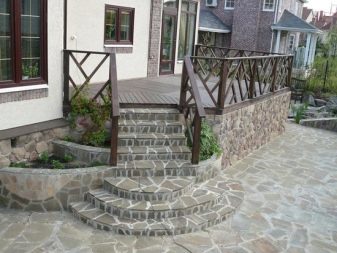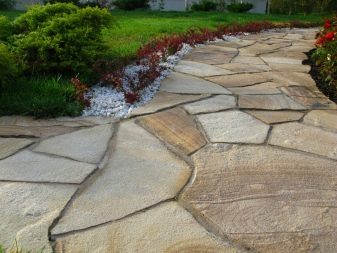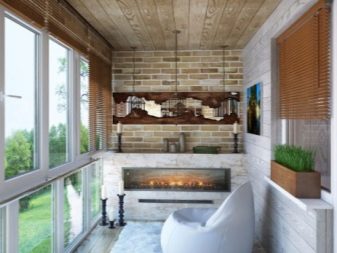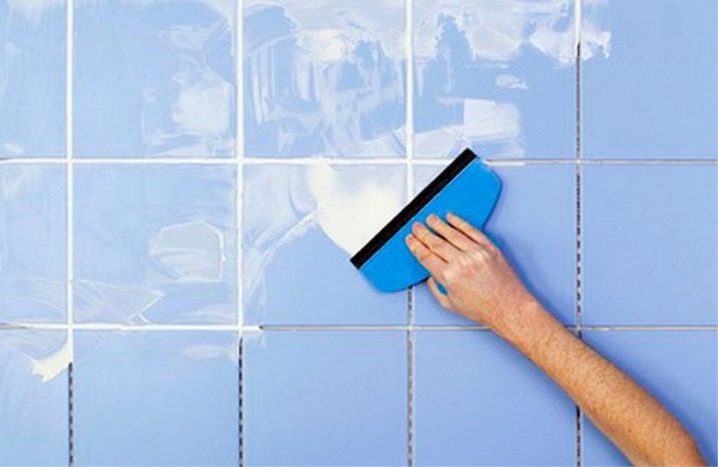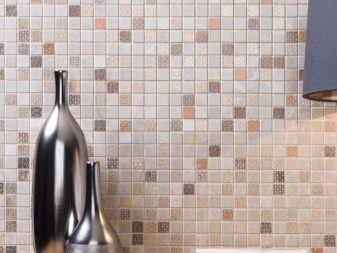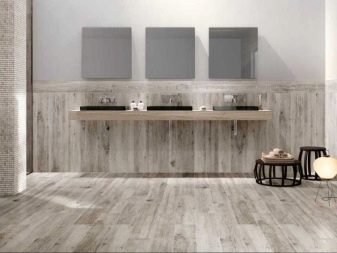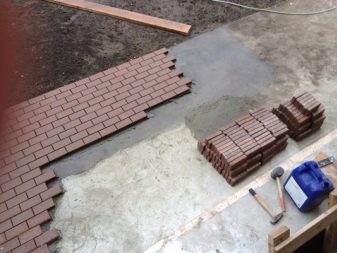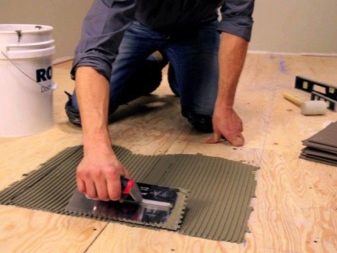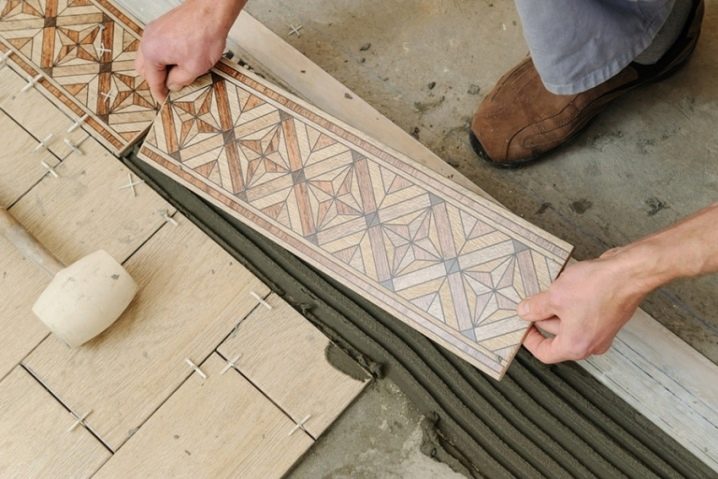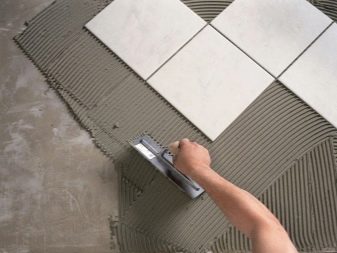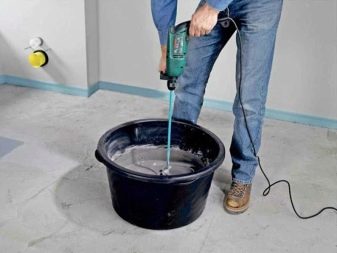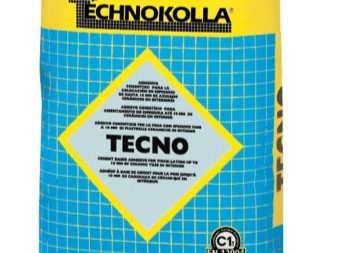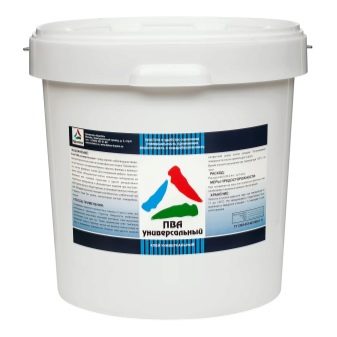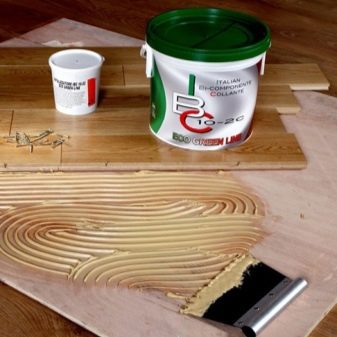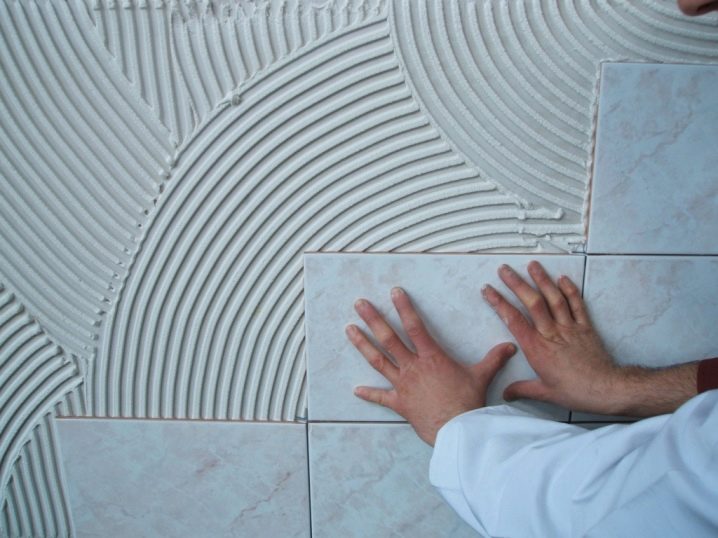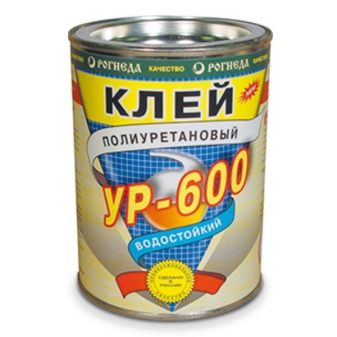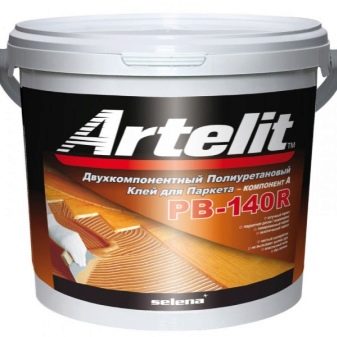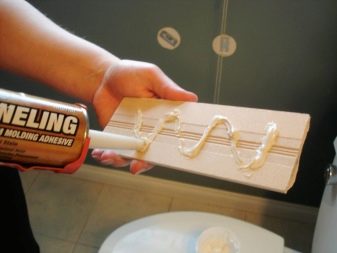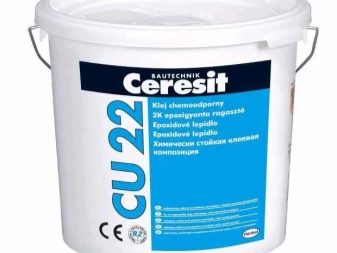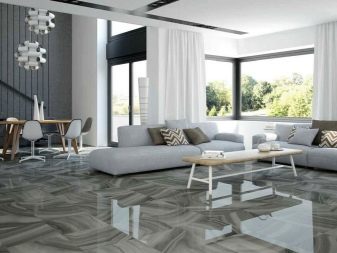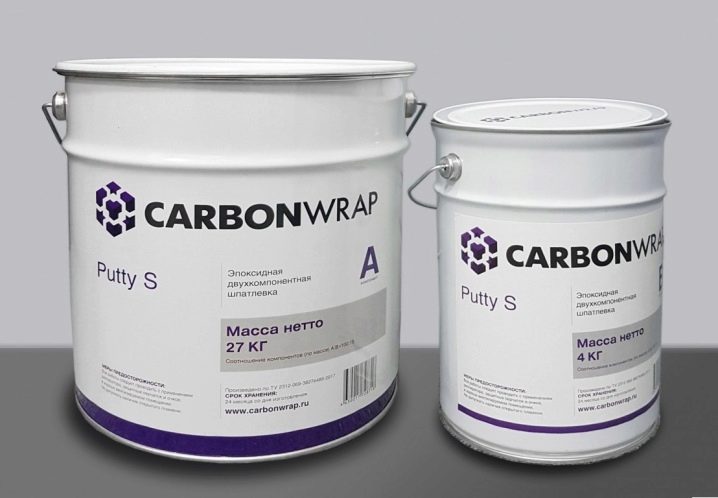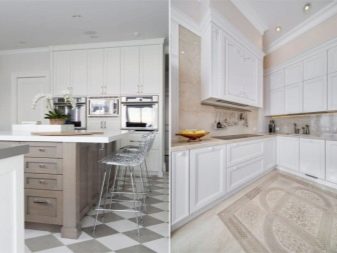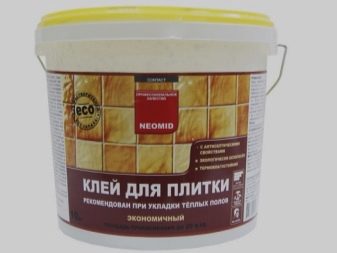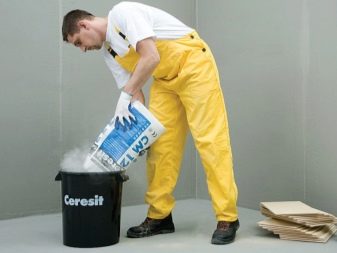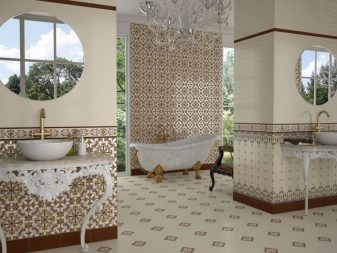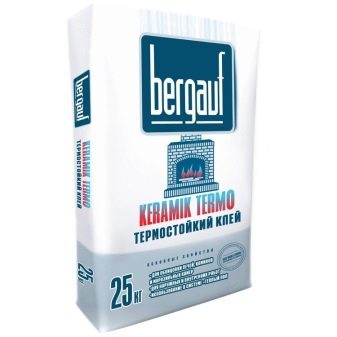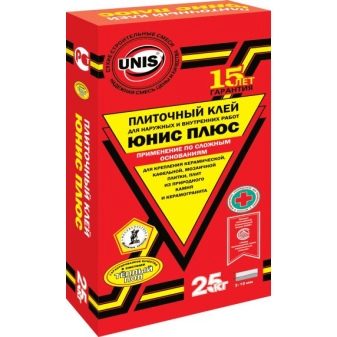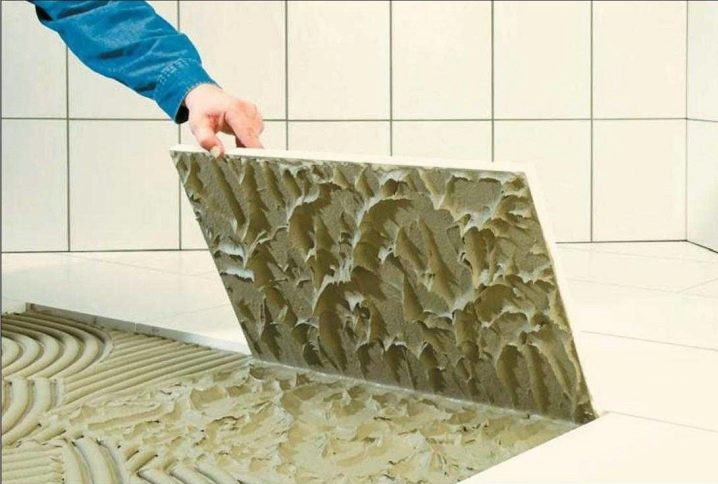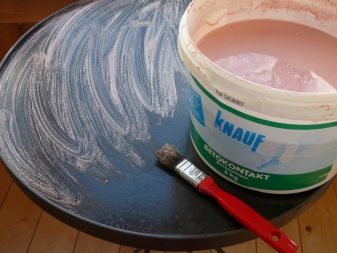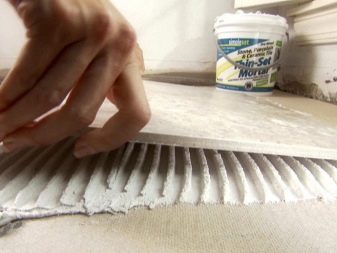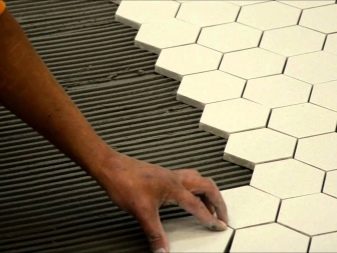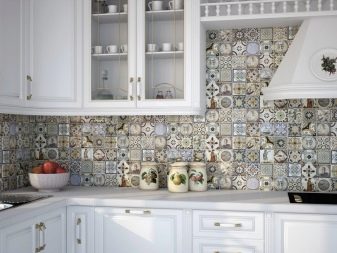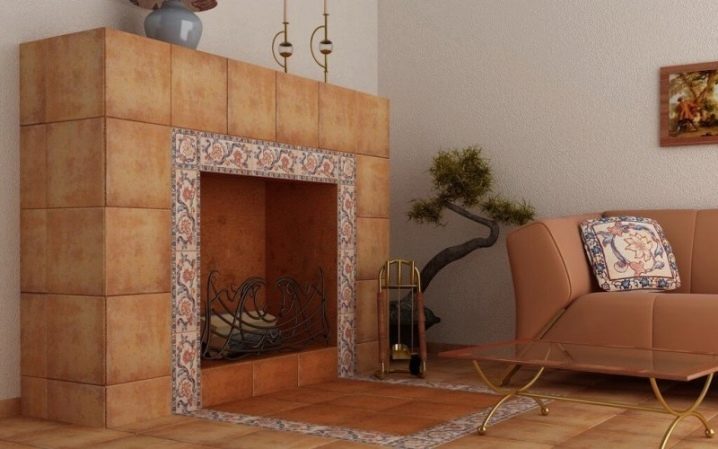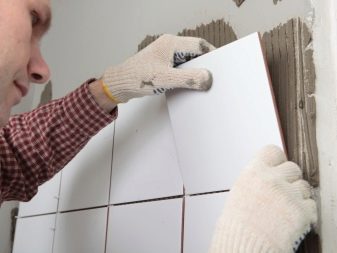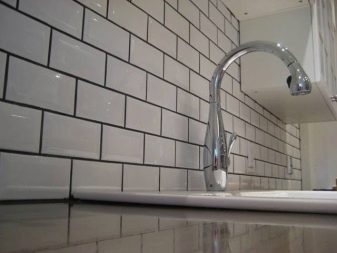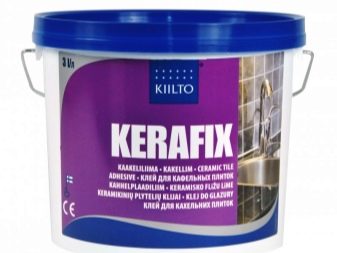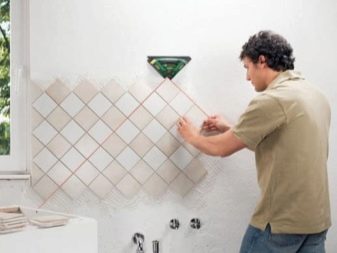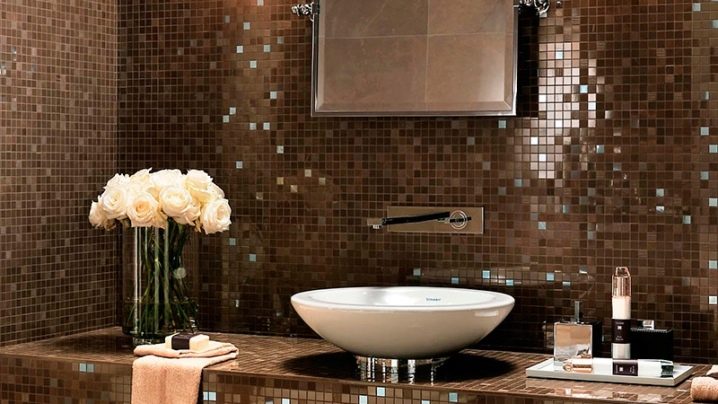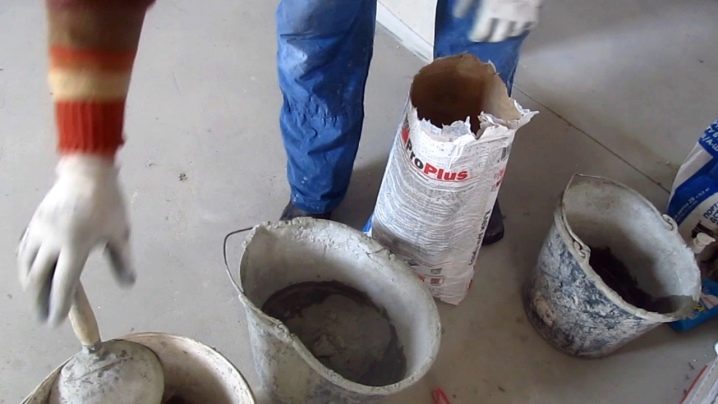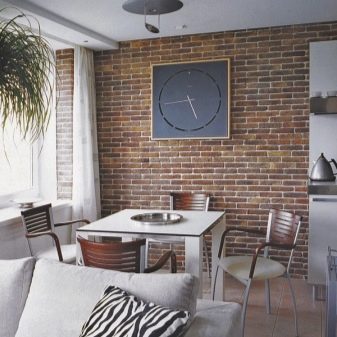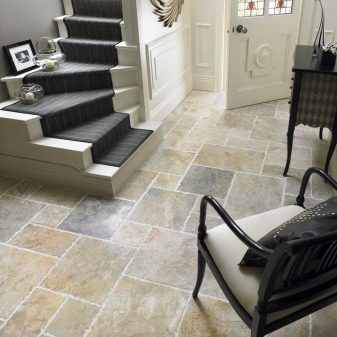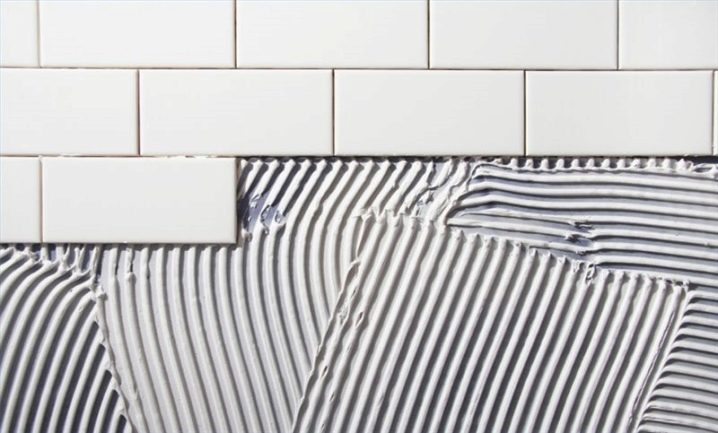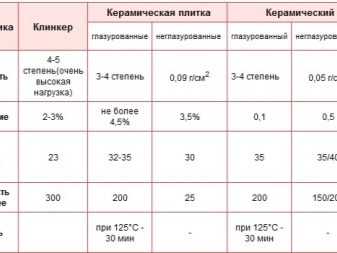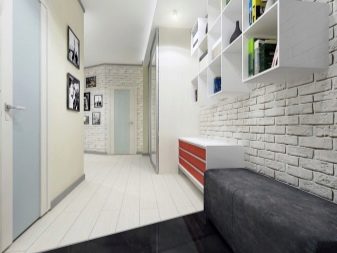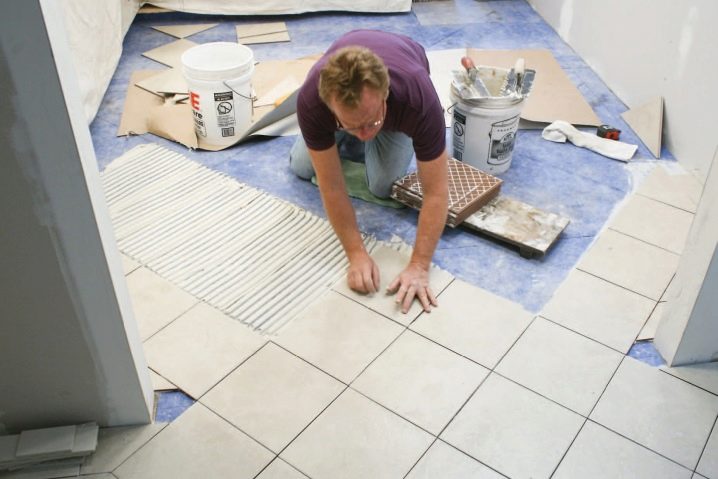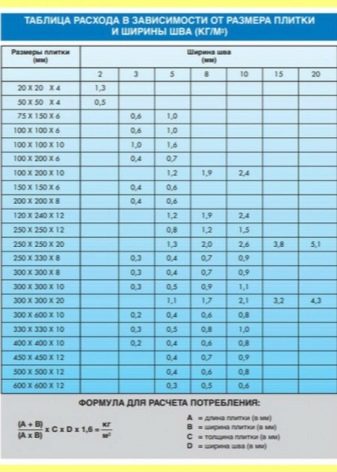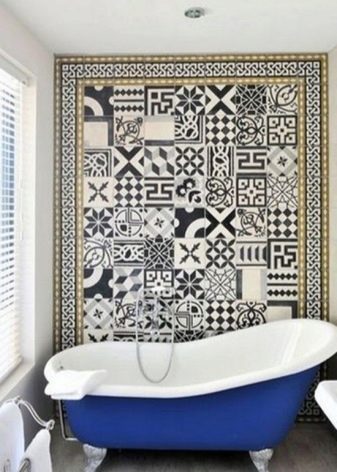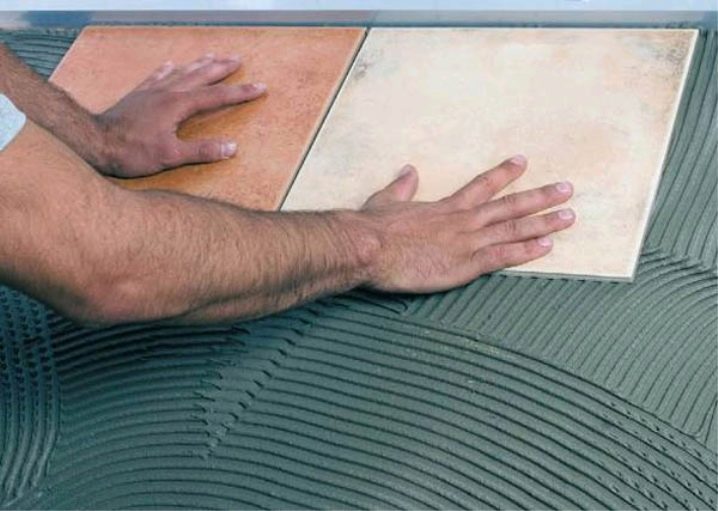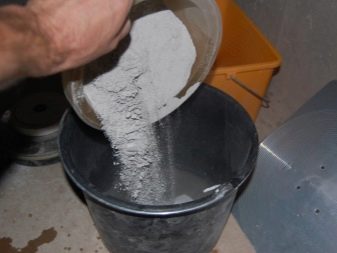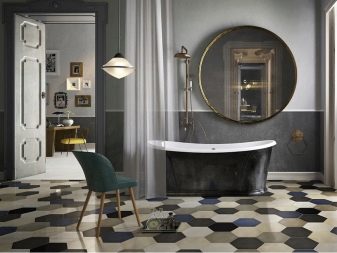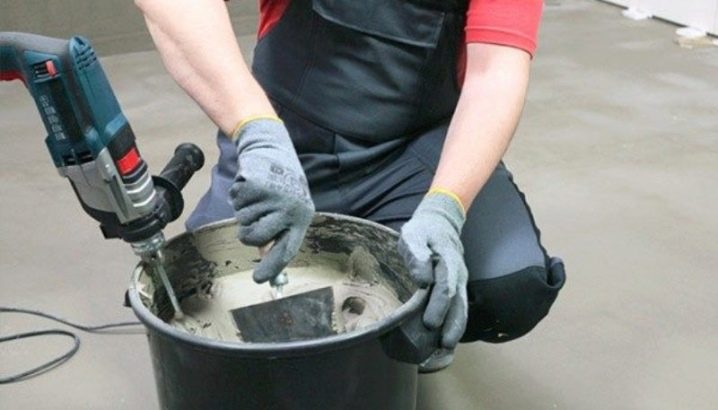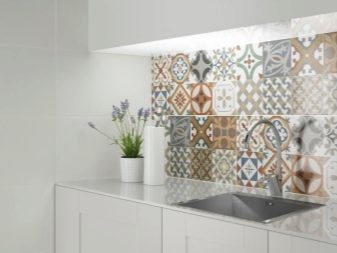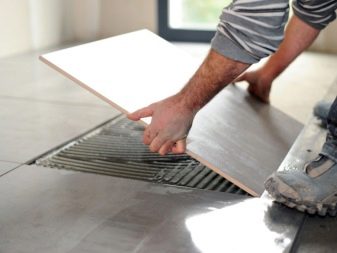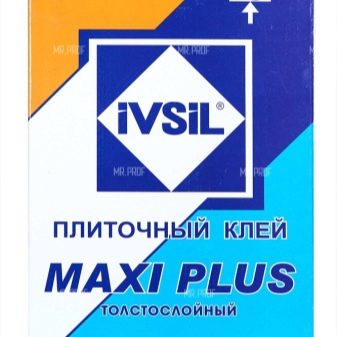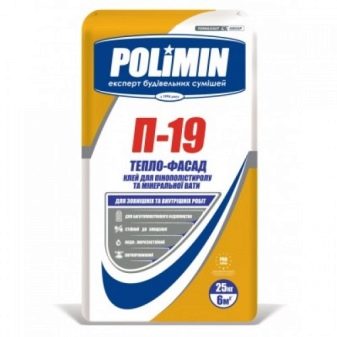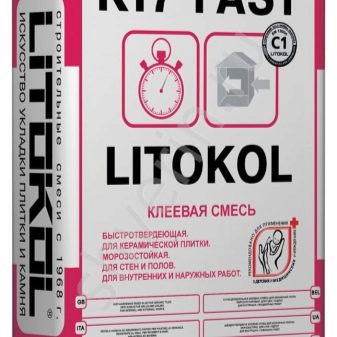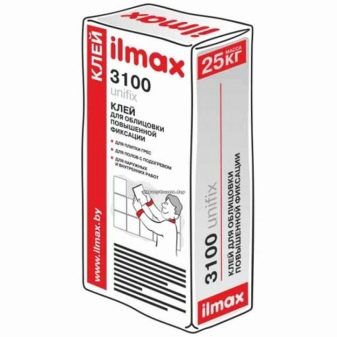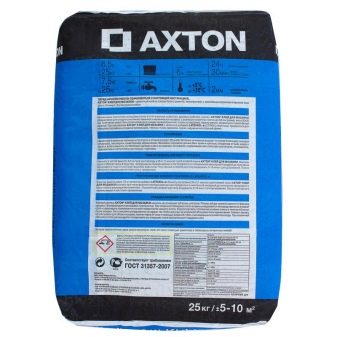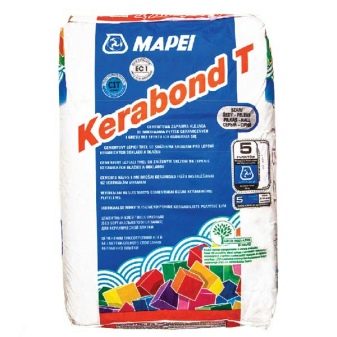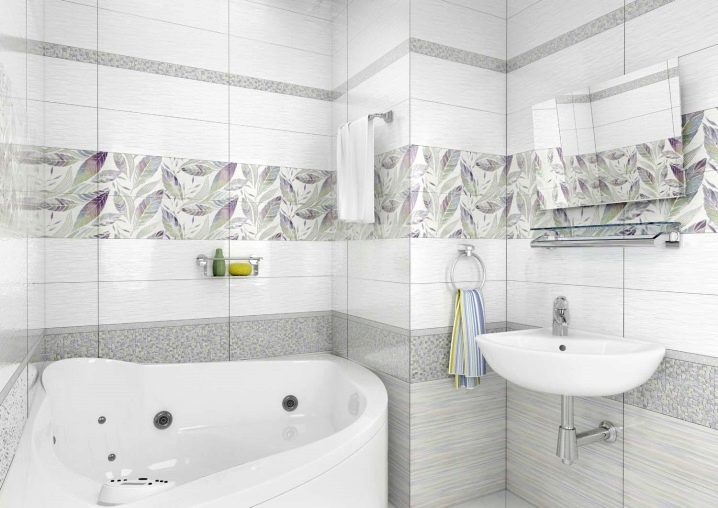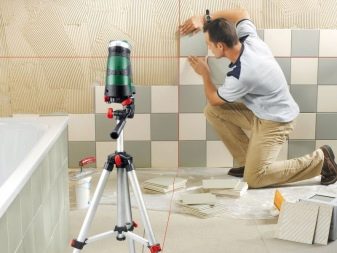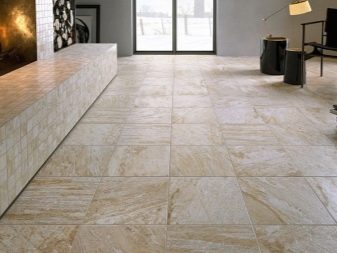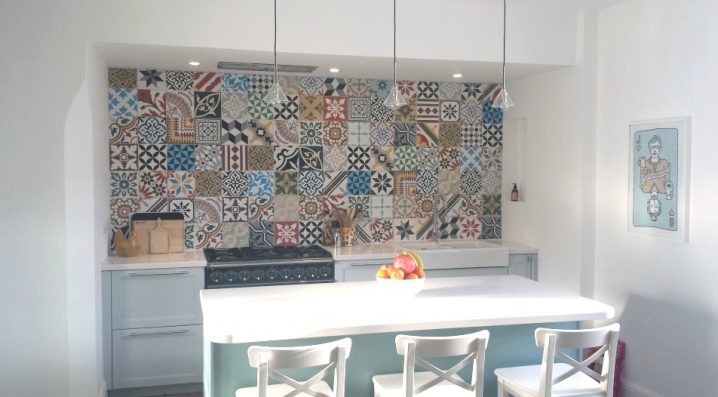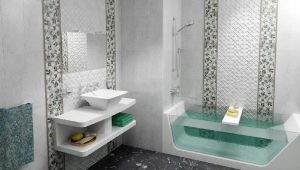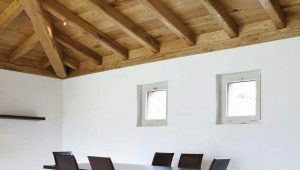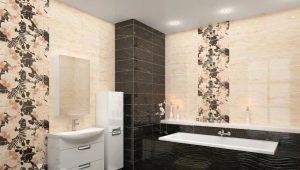How to choose tile adhesive?
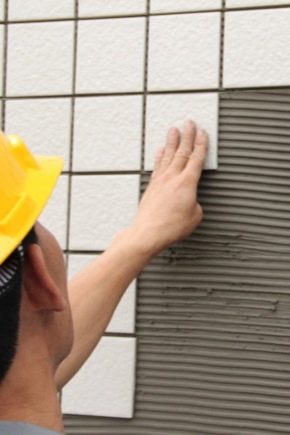
Now manufacturers are many adhesive compositions for tiles of different types, which significantly complicates the choice. Therefore, before buying it is important to study the properties and advantages of all types of glue, and then you will not go wrong in choosing.
Purpose
The purpose of tile adhesive is determined by the method of its operation, as well as its location in the house.
For exterior finish
Glue is used for cladding street buildings and structures. It is also used for laying tracks from the tiles on the summer cottages. Since the place where it will be used is the street, its operating conditions will be more stringent.
The outdoor environment is characterized by temperature changes, high humidity, windiness.In addition, the tiles are exposed to direct ultraviolet rays. Therefore, the required composition, which is able to provide maximum adhesion to the surface, and also resistance to mechanical damage.
The glue intended for exterior decoration may also differ depending on where the tile will be laid:
- Models for the porch must be water-repellent. This is due to the fact that it is there that there always remains a large amount of moisture from the feet when entering the house.
- For the basement, it is necessary to acquire a glue of increased fixation, a waterproof composition is particularly well suited. This is due to high humidity in the room.
- Cement mortar is required for paving slabs. However, for additional fixation it is often used specially designed adhesive for outdoor use. It will make the tracks more durable.
- For balconies, loggias, arbors and verandas, even if it is closed and the balcony is glazed, it is necessary to use the composition for exterior decoration. It allows you to protect the coating from damage. In addition, this model has frost resistance and moisture resistance.
For interior decoration
Glue is different from analogues for the exterior. So, in all rooms and rooms, except the bathroom, you can use almost any tile adhesive. The bathroom is an exception, because there is always high humidity and there is the possibility of water penetration into the joints between the tiles. Therefore, for her to get a special tiled glue that protects the floors from moisture.
Some now prefer to use universal formulations in the bathroom. This is because it is possible to process the joints between the elements of the tile using a special waterproof grout. In this case, the glue may not have the necessary characteristics.
In the bathroom often use fungicidal adhesive. Its main purpose is to protect the surface from mold and mildew, as well as to prevent their spread.
Tiled models are divided by purpose and depending on the scope of its application: for walls and floor.
For floor tiling, they acquire a composition with high elasticity, which plasticizers provide. For walls, such a coating is completely unsuitable, since on a vertical surface it cannot immediately secure the tile. The coating will float on the wall and deform.
Adhesive compositions for walls have fast and high fixation. That is, they are able to withstand high tensile loads. This means that the tile, even very heavy, will reliably lock onto the surface in a short period of time.
Tile features
In order to fix a certain type of tile they select a different type of glue.
All of these models will vary depending on the components that they include:
- To finish the walls with small tile elements, such as colored mosaic, as well as light natural stone, you need to buy glue, which is based on white cement. It can be easily removed from the surface, and there will be no stains on it. The coating can be quickly put in order after gluing.
- To glue porcelain tiles, characterized by its weight, special adhesive compositions are used, intended only for this material. The level of water absorption and adhesion it has the lowest compared with other types of finishes, including tile, so he just can not absorb any other glue. You can find out such glue on the inscription on the package - “for porcelain stoneware”.
Choose adhesive composition depending on other features of the tile. So, be sure to consider its size.
For example, it is important to know the thickness of the tile in order to calculate the layer of mortar that will be applied to the surface. The area of the elements is also taken into account in order to ensure their high fixation.
For some tile models, universal glue may be suitable. This applies to models 10x10, 20x20, 30x30 cm. He is not able to hold large tile models, therefore, they are already acquired with reinforced composition. Basically, such features affect the choice of glue only when finishing the walls with it, but when laying the tile on the floor, the size of the tile is not necessarily taken into account. It is only important to take into account its thickness.
Base types
All bases on which the tile is glued are divided into two large groups:
- Simple - these surfaces are almost not susceptible to deformation. Such bases include concrete, brick, cement screed. Laying tiles on them is quite simple.
- Challenging - the surface implies some difficulties during installation and during the operation of the tile. So, they can be deformed or subjected to vibrations, poorly tolerate high loads. Therefore, the tile for such a finish select only the lightest.Wood, drywall, metal, plastic, glass, chipboard, OSB, plywood are also considered to be complex bases. The hardest thing is to glue the tiles to the marble wall.
When selecting tile glue for a specific base, it is necessary to take into account the load to which the tile will be exposed, the humidity of the air in the room, as well as the temperature range within which the base is capable of not losing its quality characteristics.
From the peculiarities of the base, the technology of fixing tiles with glue will also change:
- If the base is leveled and the drops do not exceed 3 mm, then thin-layer laying is used. Glue is applied in order to provide better adhesion of the tile to the base of the floor, therefore it is applied with a thin layer:
- for tiles - from 2 mm;
- for porcelain tiles - 4-5 mm.
- If the base is uneven and has large drops, then the glue consumption will be more. For such surfaces, you can use a leveling compound. Of great importance is the fact that this surface is horizontal or vertical. Depending on the location of the base, it is necessary to apply a sufficient amount of the substance in order to glue together properly and to avoid the appearance of voids.
Applied:
- for wall tiles - up to 10 mm;
- for floor tiles - 15 mm;
- for porcelain tiles - 20-22 mm.
The method of application is called a thick layer.
Types and composition of glue
Tile glue is divided into types depending on its composition.
Cement based glue
This composition can be attributed to the dry solution. It is 90% cement, which is why it is called cement. 10% in this composition is sand, as well as additives of the modifying type. Thus, the composition has the property of universality and has a low price.
Cement glue is easy to apply and dilute yourself. To prepare the composition is diluted in water in a ratio of three to one. With it, it is usually applied tiles on a concrete base. Thus, this glue enhances adhesion and makes mounting on concrete more reliable.
The cement-based composition is also used for leveling the surface. He, of course, will not smooth the big defects of the floor or walls, but he can hide small irregularities without problems.
Dispersion Tile Adhesive
This composition has a pasty structure. That is why it is not necessary to prepare it before laying the tile, which saves time. In addition, the process of laying will be much less dust and dirt. The composition is well applied to the surface.Because of its texture, you can control the flow to save money on styling.
Moreover, this composition does not dry out immediately in the process of application, so during installation you can not rush. On average, it allows for laying in the area where it was applied, for about 40 minutes. So you can carry out laying in different ways and make an interesting surface cladding.
The composition of the dispersion glue includes organic compounds of the binder type, as well as minerals and acrylic additives.
This composition is indispensable for laying ceramic tiles, especially for mosaic, clinker, glazed tiles, as well as natural stone.
Dispersion glue is excellent for gluing material on a complex base. Since it has a high-quality and reliable composition, it can be used to lay tiles even on an old tile. But this tile adhesive has one drawback: it can not be applied to varnished MDF or fiberboard.
Do not use dispersion glue for exterior decorating. It is suitable only for interior cladding of buildings.
Polyurethane adhesive
There are two types: one and two component.Treats universal models and is suitable for any climatic conditions. Polyurethane glue is excellent for finishing complex foundations with non-uniform relief. It is considered the most mobile, compared with other types of adhesives, therefore it is used both on walls and on the floor.
Its versatility allows you to stick both large and small items. It has a high adhesion, so that tiles can be laid on smooth and porous surfaces: ceramic, glass, PVC, porcelain, and even marble.
Epoxy adhesive
It consists of epoxy resins and catalysts - in liquid and pasty form. Before starting work they need to be mixed. It has a rather thick texture, but it can also be flowing.
Any epoxy adhesive is perfect for finishing surfaces in the bathroom, bathroom, pool, sauna. This is due to its good water resistance and moisture resistance.
The great advantage of the mixture is that it is resistant to cracking and slipping of tiles, that is, it is perfect for sticking material onto a vertical surface. In addition, epoxy compounds are frost resistant.
Glue is divided into types depending on its mission and some characteristics.
Epoxy adhesive for interior work
The group has the lowest price for models designed for fixing ceramic tiles. Includes a minimum number of improving additives, which makes their functionality minimal. As a rule, such glue is used to decorate walls in household premises.
Among the indisputable advantages - it is well suited for the installation of tile on a concrete or brick base. In general, he is able to keep the coating no worse than other strong compositions. But a big disadvantage of it is that it does not hold finishing materials in rooms with high or low temperatures, as well as with high humidity.
Epoxy high fix adhesive
This composition when used shows good adhesion and strength. It is able to withstand high tensile loads, so it is used for gluing large and heavy tile elements.
In addition, the compositions of increased fixation are designed so that you can easily fix the material on the old, not removed coating.So, it can be applied to paint or old tile.
High-fix compositions are often used to decorate walls with natural stone.
All-purpose adhesive
This is a standard composition, which can be suitable for finishing the house tiles from the inside and outside. But universal glue differs in that it is designed for standard operating conditions. It does not tolerate high loads, as well as high humidity. In addition, the tile that can be glued with this composition should also be universal and should have average parameters.
Glue for floor tiles
It is distinguished by great plasticity, due to which it fills all voids when laying tiles. Thus, the material does not diverge and is well placed on the floor. But on the walls of this composition is not used, because it is not able to securely fix the finishing material vertically.
Water repellent glue
Such an adhesive composition is specifically designed for finishing surfaces in the bathroom, shower, bath, fountains, on the porch of the house. It contains a special modifier that ensures its hydrophobicity.
Water repellents are expensivetherefore, it is better to use them for their intended purpose - for laying tiles only in rooms with high humidity, despite a high degree of fixation.
Specialty glue
This group is usually classified as heat-resistant glue, which is intended for applying ceramic tiles on the surface of a fireplace, stove and other surfaces for which high temperatures are characteristic. They also trim the apron of the kitchen in the zone of the plate.
Cold-resistant glue is also considered a special compound., which can be used when laying tile even when the temperature drops below zero. It is great for unheated rooms and outdoors.
Special compositions also include glue for translucent coatings, as well as a special composition for marble.
Liquid Nails
It includes examples and synthetic substances. If neoprene is included in its composition, then it will be distinguished by high strength, but such compounds are considered toxic. That is why they must be used for laying tiles on the street. In addition, the outdoor air quickly disappears and the unpleasant smell that it exudes.
Liquid nails can be water based.That is why they are often used for interior decoration. But since it contains water, this adhesive cannot be used in wet areas. The composition is usually used for the restoration of surfaces, for example, if one or more elements of the tile have disappeared. It is great for sticking mosaic.
Special properties
Adhesive for decorative tiles must have special properties and quality characteristics. So, the important properties of such a composition are:
Plastic
She should be moderate. Otherwise, the composition will spread very much, and you will not be able to apply a layer of the desired thickness for gluing one or another type of tile. Usually this property characterizes rubber-based compounds.
The ductility of the glue does not depend on its consistency. That is, even liquid glue can be applied in a thick layer.
Spreadability
This feature is very important for the installation of floor tiles. Spreadable compositions fill all the gaps between the tiles and prevent it peeling off from the walls or floor. If the coating will fit most evenly and tightly,when falling on the floor tile of heavy things, this element or part of it will not crack, the coating will remain complete.
Adhesive characteristics
This indicator should be high. It characterizes the ability of glue to hold the tile, regardless of its size or weight. Glue having adhesive properties allows the tile to adhere more quickly and adhere to the surface. This characteristic should be especially paid attention to if you plan to install large-sized porcelain stoneware.
Return water
It is important that the adhesive does not have a quick release of water. Otherwise, you will not be able to carry out styling correction, if you suddenly misplaced one of the cover elements. So you can correct the picture or change the type of laying, if you do not like the way the tile looks.
The return of water characterizes the speed of drying glue. It is desirable that its drying time was average.
The slower the glue dries, the stronger the fastening of the tile to the surface.
Heat resistance
This characteristic is peculiar to the composition intended for application on heated floors.Thus, a good heat-resistant adhesive can withstand temperature effects up to + 100 ° C. Such compositions additionally have a special coefficient of plasticity. The manufacturer usually indicates on the packaging for which type of underfloor heating this glue is intended.
Acid resistance
This property of glue determines the possibility of its use in rooms with aggressive conditions. So, if you plan to lay tiles in production areas or where you will often use powerful chemical agents, then this composition will be an excellent solution.
It is resistant to various stimuli. In addition, it can be laid even on a wet base. Glue dries quickly. These types of mixtures do not include harmful impurities. A feature of acid-resistant formulations is the absence of odor.
When choosing glue, you should also pay attention to the alkali-resistant composition. Important characteristics such as hydrophobicity, rapidity of hardening, as well as durability. Good glue should be waterproofing, moisture-resistant, plastic. The complexity of installation directly depends on these quality characteristics.as well as the duration of the work and the specific purpose of the adhesive.
Consistency
Liquid
Liquid glue belongs to the finished mixtures. As a rule, such compositions are sold in buckets. Most of the ready-made mixtures have a polyurethane base, distinguishes them and the higher cost.
Polyurethane adhesive has no limitations in terms of operation. Thus, it is great if you expect to lay tiles for a long time.
But dismantling the coating, glued with the help of this composition, will be difficult. So, it will be possible to remove a tile only with partial removal of the basis.
Liquid mixtures require only perfectly aligned surface for tile laying.therefore they are not suitable for all lining options. On the liquid mixture infrequently stick large elements of the tile. Liquid composition is ideal for decorating walls or floors with mosaic elements.
This group also includes glue liquid nails. It has a liquid consistency and is only suitable for installation in dry rooms.
Dry
This type of glue is presented in the form of a mixture, which is usually diluted with water. It provides good grip.In addition, it is usually sold in bags, so it can be easily transported to the house, there will be no problems during transportation.
As a rule, dry formulations are based on cement. They allow to level the surface and therefore are suitable for installation on almost any base.
But dry formulations are not so durable, their service life is not more than 50 years.
Tiles glued onto a dry diluted mixture can be quickly and easily removed by yourself. At the same time you do not damage the base and do not distort it. Usually for the dismantling of such surfaces using a punch.
Quantity calculation
Calculating glue consumption is a rather difficult task. When calculating, it is necessary to take into account not only the surface area on which you are going to lay tile, but also a number of other factors:
- First of all, you need to consider what type of glue you will use. Consumption will vary depending on whether it is liquid or thick. Cement glue has the highest consumption. As a rule, from 1 to 2 kg of this composition must be used for one square meter.
- The exact consumption is determined depending on the layer thickness of the applied composition, as well as the need to level the surface.If you need to level the wall or floor, then you will use up three times more glue. But if the surface is flat, the flow rate will be greatly reduced.
- The consumption is influenced by the characteristics of the tile and its water absorption quality. So, the glazed tile absorbs the most adhesive composition, so it is necessary to use a lot of glue. But porcelain stoneware, as well as cotto tiles and durable handmade models absorb little glue, so the cost in this case will be reduced.
- If the base material is porous, it will absorb a lot of glue. Therefore, it is also necessary to build on its qualities in the calculations.
- Even weather conditions will affect the consumption of adhesive. The tile is usually laid at a temperature of 18 to 23 ° C. If the air temperature is higher than this indicator, the water from the adhesive will evaporate quickly in the drying process, so the flow will need to be increased. As for the negative temperature, it is better not to lay the tile with it, otherwise the glue will lose most of its quality characteristics and will not be effective.
- The consumption of glue is strongly influenced by the technique of work.Usually, craftsmen who professionally do tile laying use much less composition than beginners. The latter usually use too much solution for gluing.
- During operation, different tools can also be used, which also affect the consumption of glue. So, if you apply it with a V or U-shaped spatula, a more economical consumption will be provided. Spatulas with square teeth consume a lot of glue. The larger the teeth, the greater will be the expense.
To calculate the required amount of glue, you should use one of several methods:
- The first involves the use of instructions, which are indicated on the package of glue. Having calculated the surface area that you plan to cover with tiles, you can see on the package how much glue is needed for this. Thus, this calculation is the simplest, but not the most accurate.
- The second method of calculation is intended to acquire the necessary amount of cement composition. In order to find out the expense in this way, it is necessary to multiply the adhesive weight by 1 square meter. m, indicated on the pack, on the thickness of the layer or the thickness of the tile.Thus, the result will show the required amount of the composition of 1 square. m
- The third method is suitable for calculating glue for a particular type of tile. To do this, you need to know the thickness of the finishing material with millimeter accuracy. You should find out what the average consumption of glue that you plan to buy. The thickness of the tile must be halved and then multiplied by the amount of adhesive specified by the manufacturer. The result means the consumption of the composition per 1 square. m for your type of coverage.
How to breed?
It is usually necessary to breed only dry mixtures. To do this, mix the dry matter in the ratio indicated on the package with the composition. But initially it is required to make exact calculations to mix only the necessary volume of glue. Otherwise, the remnants will have to be thrown away, because after a certain time the mixture will harden and be unusable.
The powder is mixed with water, sometimes some elements are additionally added. Suppose compounds that prevent the development of mold and mildew. The average amount is a mixture of 25 kg of dry matter with 6 liters of water.
More accurate indicators and the ratio must be learned on the basis of the information indicated on the pack, since the ratio may vary slightly depending on the type of composition.
Stir this mixture can be manually. To do this, it is necessary to knead the composition thoroughly and vigorously for 5 minutes so that the mass becomes homogeneous and creamy. For the preparation of tile glue is often used perforator with a nozzle-mixer. With it, you can quickly prepare a high-quality and homogeneous mixture, which will be immediately ready for application.
How long does it dry?
On average, tile compositions dry out completely for about a day, but the exact time depends on the type of glue and its type. Primary solidification of many models occurs after 15 hours. After that, you can use the grout and put the floor in order.
The final hardening of the mixture occurs after a week, especially with glue for laying tiles on the floor. On the walls, if their surface was prepared in advance and leveled, the composition dries out completely after no more than 2 days.
Manufacturers
- The rating of the best brands opens adhesive composition for tiles Ivsil mosaik. 25 kg of such a mixture costs around 500 rubles.The composition has a white color, so is ideal for gluing light tiles. The level of adhesion is about 1 MPa, which is considered a high figure. The tool Ivsil Mosaik is a professional, but you can use it to stick your own tiles. This composition is perfect for sticking tiles in wet areas. With it, often trim pools and showers. In addition, the manufacturer does not give restrictions on the type of tile that can be glued with such a composition.
- For accelerated fixation is perfect composition Polimin "Moment". It sets quickly and is therefore great for tile restoration, as well as for applying wall coverings. Moment series models have high quality reinforced composition.
- Manufacturer Litokol It represents high quality formulations, but their price is quite high. The price of a pack on average 1500-1800 rubles per pack. This is a waterproof type of glue. The Russian manufacturer among the advantages of the adhesive composition and calls the fact that the diluted composition does not harden in the tank up to 8 hours. A review of the compositions of this brand shows that they are intended mainly for tile and porcelain stoneware.
- The compositions Ilmax presented in the form of dry mixes and are among the best in this group. Basically they are designed for ceramic tiles. You can pick up a composition for exterior and for interior work. Almost all of them are resistant to temperature extremes and high humidity.
- Brand compositions Axton sold in the form of cement mixtures in bags of 25 kg. They are ideal for laying porcelain tiles, mosaics and stone, as they are reliable and resistant. The composition quickly grabs in the process of gluing.
- The brand Mapei It is a quality white tile adhesive that is suitable for any tile, even glass and marble. The manufacturer also produces epoxy, polyurethane, cement compositions for different bases and types of finishes.
Tips for choosing
- Choosing tile adhesive, try not to save. Otherwise, you will risk acquiring a poor-quality mix that cannot ensure the durability of the tile fastener and ruin both the finishing material and the base.
- When choosing models for the bathroom, give preference to compositions with high adhesion, as well as an average cooling rate.
- When buying it is better to read the instructions on the pack.Many manufacturers indicate the compatibility of the adhesive with a specific coating. Some adhesives are completely unsuitable for polymeric and acrylic materials, and some are not suitable for wood. For such capricious materials it is better to purchase synthetic compounds.
- On the packaging manufacturer often indicates the recommended size of the tile, which is able to hold the composition. That is why try to purchase it in accordance with the specific parameters of the product. In this regard, tile adhesive must be purchased only after purchasing a tile to take into account all the nuances.
- Any adhesive must adhere quickly to the surface so as not to cause inconvenience to you, and so that the installation process takes as little time as possible. A good indicator of its quality is the following: if the composition dries quickly, then it is not very high quality, but if the drying time is longer, then it is considered reliable, the tile on it will subsequently hold more firmly.
- In order to choose the right adhesive, be sure to consider the conditions of bonding and the conditions in which the operation of this coating will occur.
- You should also pay attention to the purpose of the adhesive and its special characteristics. Do not save on the consumption of the composition. It is better to apply more of this substance and lubricate the entire tile with high quality so that it stays securely on the surface.
How to glue tiles, you will learn from the following video.
